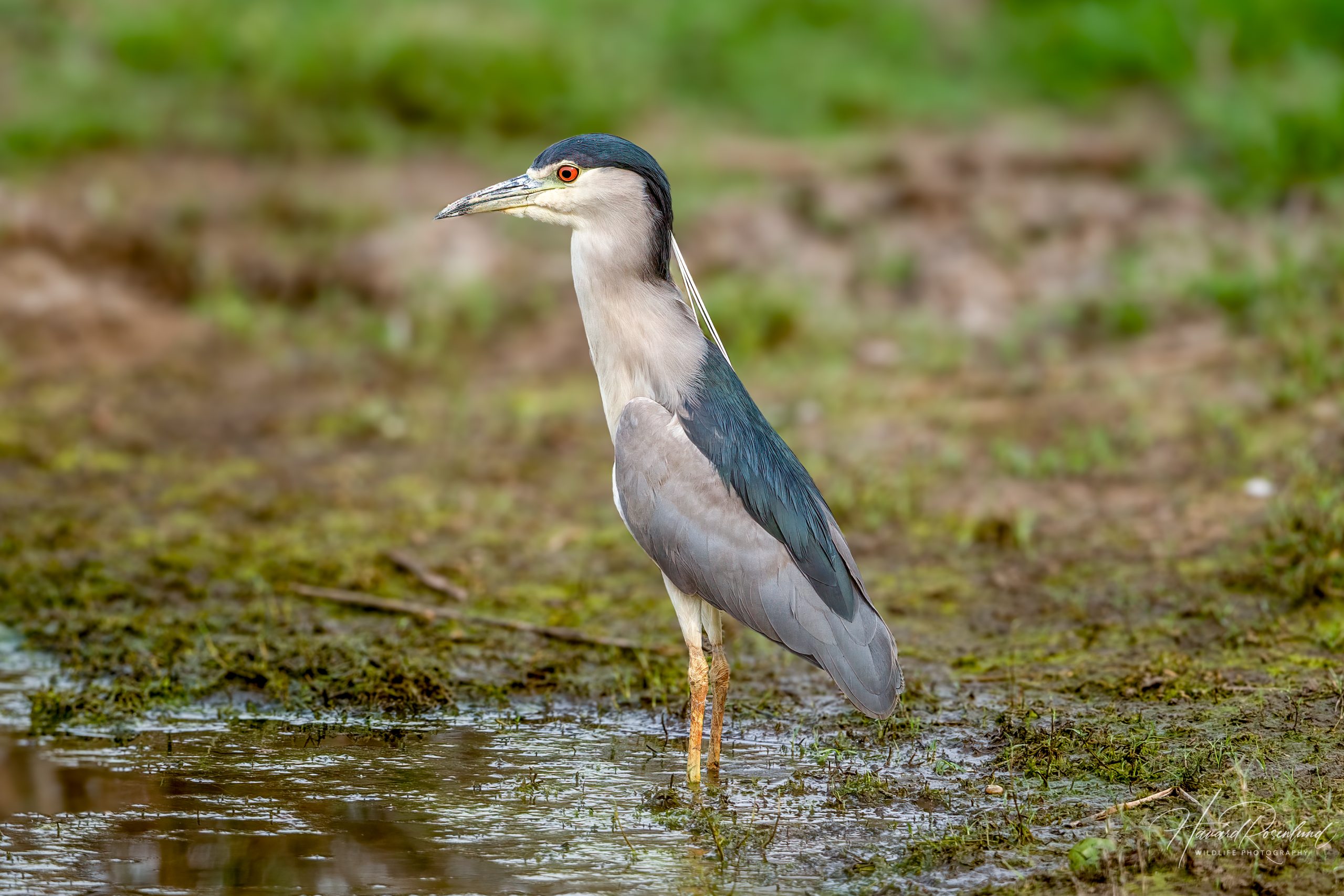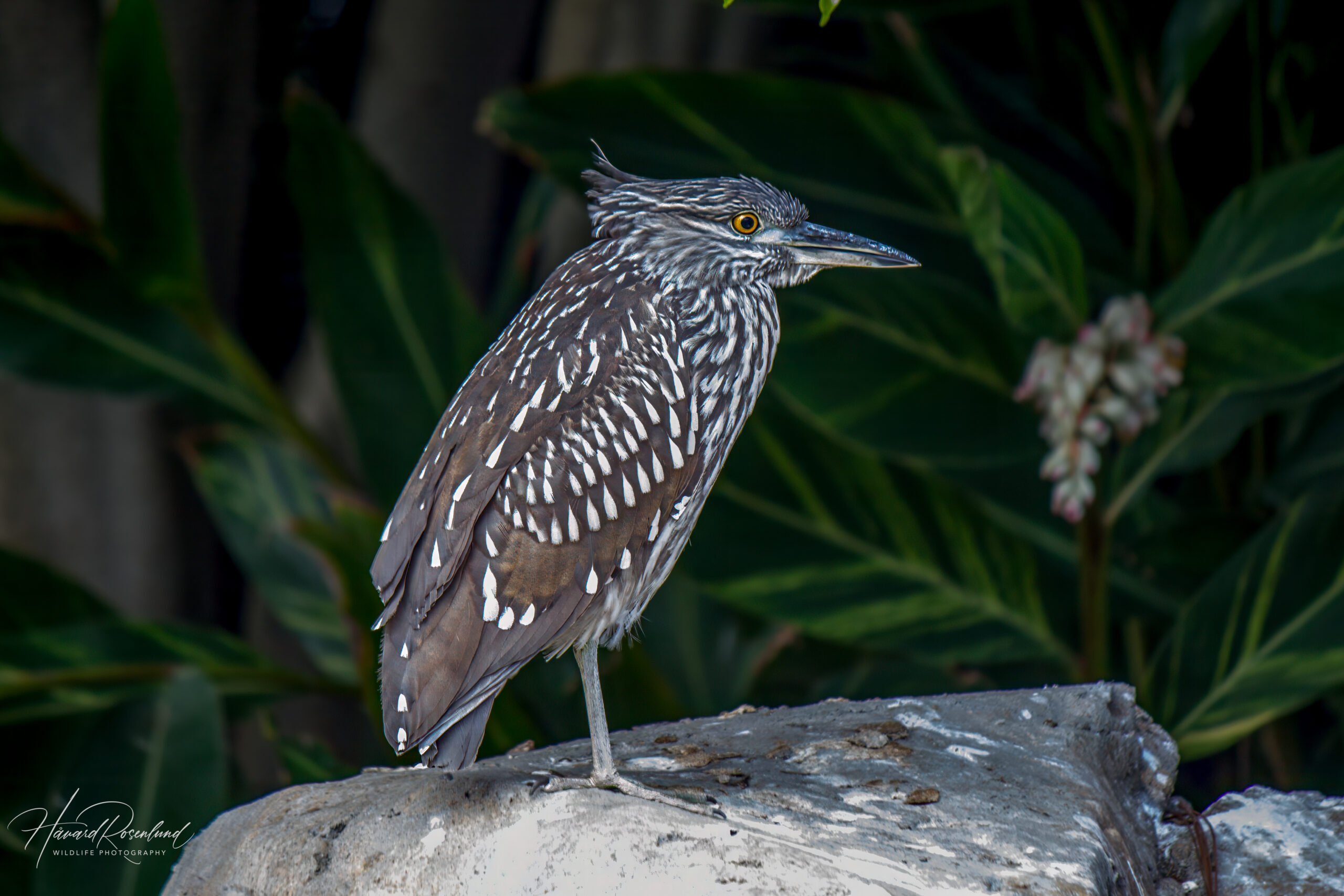Black-crowned Night Heron
(Nycticorax nycticorax)
Description
The black-crowned night heron (Nycticorax nycticorax), also known as black-capped night heron, or simply night heron, is a medium-sized heron known for its striking appearance. This species has a broad range, found in large parts of North and South America, Europe, Asia, and Africa. It is migratory in the most northern parts of its range. Adults have a black back and crown, with white underparts and gray wings. Their eyes are red, and they have short yellow legs and a stout black bill. Juveniles are brown, speckled with white and buff. This bird is approximately 60 cm (23 in) in length and has a wingspan of about 1.15 meters (3.8 feet). It has a shorter, thicker neck, and a more squat appearance compared to other herons and egrets.
Diet & habitat
The black-crowned night heron is adaptable and can be found in a range of wetland habitats, including marshes, rivers, lakes, lagoons, and flooded fields. It can also be found along coastlines and in agricultural areas. This heron is an opportunistic feeder. The diet mainly consists of small fish, but it will also eat crustaceans, insects, small mammals, and even the eggs and young of other birds. It is unique in its hunting behavior, often feeding at night or during twilight hours, standing still at the water’s edge, and waiting to ambush prey.
Nesting
The breeding season of the black-crowned night heron varies depending on its geographic location. It usually nests in colonies, often with other species of herons and egrets. The nests are built from sticks and are usually located in trees or shrubs near water. Females typically lay 3 to 5 eggs, which are incubated by both parents for about 24 to 26 days. Chicks are altricial at hatching, meaning they are born in a helpless condition and rely on their parents for warmth and food. They fledge in about 6 weeks but may remain with their parents for a short period after that.
Status
Even though the black-crowned night heron is widespread and generally common, it faces threats from habitat destruction and pollution. In some cultures, it is considered a symbol of good luck or an omen of prosperity. It is listed as least concern on the IUCN Red List.








